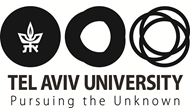A. Books (Biblical Studies)
Sutskover, Talia, Sight and Insight in Genesis: A Semantic Study (Sheffield: Sheffield Phoenix Press, 2013).
B. Articles
Sutskover, Talia, “The Symbolism of the Spatial Concepts ‘in front of, before’ (לפני) and ‘behind, after’ (אחרי) in the Hebrew Bible, with a Special Focus on the Jacob Narratives,” in: Pierre van Hecke and Hanneke van Loon (eds.), Where is the Way to the Dwelling of Light? Studies in Genesis, Job and Linguistics in Honor of Ellen van Wolde (Leiden: Brill, 2023), pp. 89-100.
Sutskover, Talia, “The Politics of Ancient and Modern Burial: Revisiting the Case of Rizpah,” in: Athalya Brenner-Idan and Gale A. Yee (eds.), Samuel, Kings, Chronicles, Ezra-Nehemiah, Vol. II (Texts @ Contexts; London: Bloomsbury T&T Clark, 2021).
—, “The Theogony of Dunnu: A Translation, Analysis, and Associations with the Dan Narrative (Judges 17-18),” Beit Mikra 65 (2020), pp. 58-87 [Hebrew].
—, Book Review of: “Moshe Garsiel, The Book of Samuel: Studies in History, Historiography, Theology and Poetics Combined, Part one: The Story and History of David and His Kingdom (Jerusalem: Rubin Mass, 2018),” Beit Mikra 64 (2019), pp. 358-368 [Hebrew].
—, “The Conception of Space in the Narrative of Naboth's Vineyard,” Beit Mikra 60 (2015), pp. 65-91 [Hebrew].
—, “Directionality and Space in Jonah,” in Athalya Brenner-Idan (ed.), Discourse, Dialogue & Debate in the Bible: Essays in Honour of Frank H. Polak (Sheffield:11 Sheffield Phoenix Press, 2014), pp. 203-217.
—, “The Frame of Sacrificing in Judges,” VT 64 (2014), pp. 1-13.
—, “Name Giving in Genesis and Establishing Authority,” Beit Mikra 57 (2012), pp. 33-51 [Hebrew].
—, “The Book of Ruth: New Insights”, Review on the volume: Jennifer L. Koosed, Gleaning Ruth: A Biblical Heroine and Her Afterlives (South Carolina: University of South Carolina Press, 2011), H-Net Reviews, http://wwwh-net.org/reviews/showpdf.php?id=33646.
—, “Lot and His Daughters (Genesis 19:30-38). Further Literary and Stylistic Examinations,” JHS 11 (2011), pp. 2-11.
—, “The Themes of Land and Female Fertility in the Book of Ruth,” JSOT 34 (2010), pp. 283-294.
—, Review on the volume: “Nili Wazana, All the Boundaries of the Land: The Promised Land in Biblical Thought in Light of the Ancient Near East (Jerusalem: Bialik Institute, 2007 [Hebrew]),” Beit Mikra 54 (2009), pp. 167-173 [Hebrew].
—, “Lexical Fields and Coherence in the Jacob Narrative,” in: A. Brenner and F. Polak (eds.), Performing Memory in Biblical Narrative and Beyond, Amsterdam Studies and Religion: Sheffield Phoenix Press, 2009, pp. 126-139.
—, Review on the Volume: “Gershon Brin, Studies in the Prophetic Literature (Jerusalem: The Bialik Institute, 2006 [Hebrew]),” Beit Mikra 52 (2007), pp. 180-183 [Hebrew].
—, “Another View of Parashat Vayeilech,” in: Tamara Cohn Eskenazi (ed.), WRJ Woman's Commentary on the Torah (New York: Women of Reform Judaism, 2007), p. 1245.
Sutskover, Talia, “The Semantic Field of Seeing and Oral Communication in the Joseph Narrative,” Journal of North Semitic Languages 33 (2007), pp. 33-50.
Stadler-Sutskover, Talia, “The Leading Word and its Roles in Judges 19-21,” in: Johann Cook (ed.), Bible and Computer: The Stellenbosch AIBI-6 Conference. Proceedings of the Association Internationale Bible et Informatique “From Alpha to Byte” University of Stellenbosch 17-21 July, 2000 (Leiden: Brill, 2002), pp. 295-307.
C. Editor of Peer Reviewed Journal Issue
Sutskover, Talia (ed.), Beit Mikra, special issue: Deuteronomy in the Pentateuch and the Deuteronomistic Literature, vol. 67 (Jerusalem: Mossad Bialik, 2022).
D. Additional Publications
Talia Sutskover-Stadler, As a Woman Writes, Tel Aviv: Halonot, 2005 [Fiction. Short Stories; Hebrew].
Talia Sutskovet-Stadler, Signs, Tel Aviv: Iton 77, 2020 [Poetry; Hebrew, with biblical influences]



